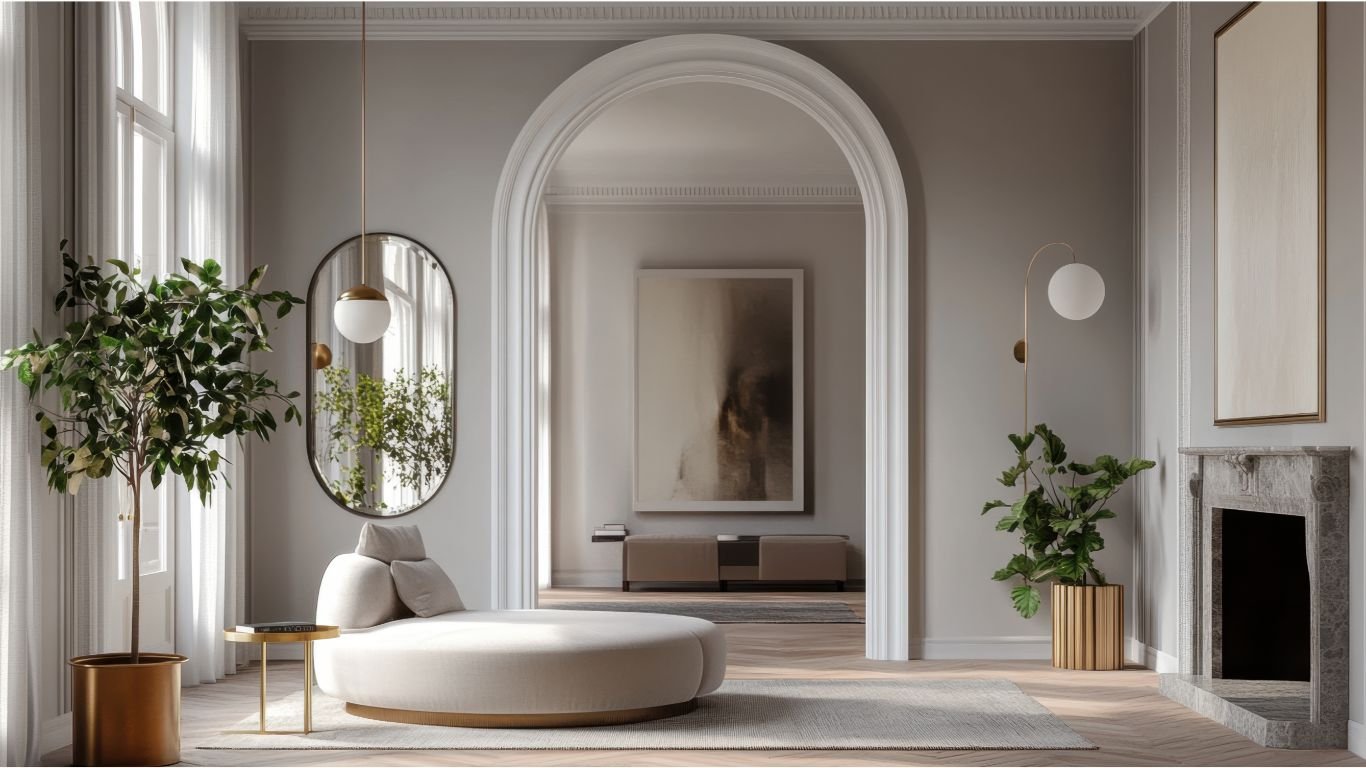Mirrors in Interior Design

Whether you live in a studio apartment or a sprawling penthouse, mirrors are one of the most effective tools in interior design. As a New York interior designer, I’ve used mirrors in everything from space-starved Brooklyn lofts to large, light-filled Manhattan homes. And no matter the square footage, they remain one of the most powerful—and underrated—ways to shape a space.
Far more than a functional surface to check your reflection, a mirror can transform the mood, proportion, and character of a room. Done right, it can introduce light, highlight views, balance scale, and bring a sculptural, even architectural element to your design.
Why Mirrors Work: Light, Space, and Perspective
Let’s geek out for a moment. Mirrors work because they reflect light—literally. When photons hit the surface, they bounce back into the room, diffusing brightness and enhancing visibility. This makes any room feel more alive—especially on dark days or in spaces with limited natural light. But mirrors also reflect perspective, doubling views and extending sightlines. That’s true whether you’re amplifying a cozy nook or echoing the skyline from a corner window.
So yes, mirrors are excellent in small spaces—helping to make a compact dining room feel more expansive or a narrow hallway seem wider. But they’re just as impactful in large rooms, where they can reinforce symmetry, add vertical drama, or provide visual grounding in a high-ceilinged space.
Mirror Placement: Strategy Over Size
If there’s one placement rule I live by, it’s this: don’t just hang a mirror where there’s empty wall space—hang it where it will do something. That might mean:
- Reflecting natural light from a window to a darker part of the room
- Mirroring a piece of art or furniture to double its visual impact
- Bringing a garden, skyline, or architectural view deeper into the space
In rooms with generous windows, placing a mirror opposite or adjacent to the light source enhances natural illumination. But in rooms with dramatic focal points—a fireplace, chandelier, or bold sculpture—a mirror behind or near the feature adds dimension and rhythm.
And for clients with stunning city views? Mounting a mirror perpendicular to the window can pull that panorama across the room, creating a layered, cinematic effect.
Scale and Shape: Go Big or Go Sculptural
In spacious homes, large mirrors can act almost like architectural elements. Leaning a tall mirror against a wall can soften angular corners or emphasize ceiling height. Oversized mirrors with thick frames can anchor a sitting area the same way an artwork or fireplace might. For more minimal interiors, they can even replace the artwork.
On the other end of the spectrum, small sculptural mirrors—think clusters of round or geometric shapes—can create visual rhythm along a hallway or stairwell, or be used as accent pieces above nightstands or sideboards.
Just be sure the size of the mirror works with what it’s paired with. A general rule of thumb: a mirror should never be wider than the furniture below it. And a tall vertical mirror tends to elongate a space more than a short wide one—an important consideration in both tight and tall rooms.
Mirror Style: From Minimal to Ornate
Mirrors can also speak volumes about the style of a space. In modern, minimalist homes, I often use mirrors with clean metal frames or no frames at all—letting the shape and reflection do the talking. In more traditional or maximalist interiors, a bold, gilded mirror can add just the right amount of old-world charm or theatricality.
Round mirrors are a favorite for softening the sharp angles of furniture. They add a touch of modern elegance while drawing the eye. For example, a large circular mirror above a console table in an entryway can create a welcoming, open feel—and it’s incredibly functional too. (This furniture designer makes beautiful mirrors and discusses placement with concole pieces.)
Vintage or antique mirrors are also a beautiful way to add texture and depth to a room. I’ve sourced antique French mirrors for Upper East Side apartments and distressed Venetian glass for lofts in Tribeca. A touch of history never hurts.
Bottom Line: Mirrors in Interior Design
Mirrors are one of the most versatile, effective tools in any designer’s toolkit. Whether you’re looking to brighten a room, reflect a view, create symmetry, or make a dramatic statement, they can adapt to almost any function or aesthetic. And they work just as well in a 400-square-foot walk-up as they do in a 4,000-square-foot brownstone.
Want to see how mirrors can work in your space? Browse a few of my recent design projects where mirrors play a starring role. And if you’re working on a home refresh, check out our guide on small space design—many of the principles apply to larger rooms too.


